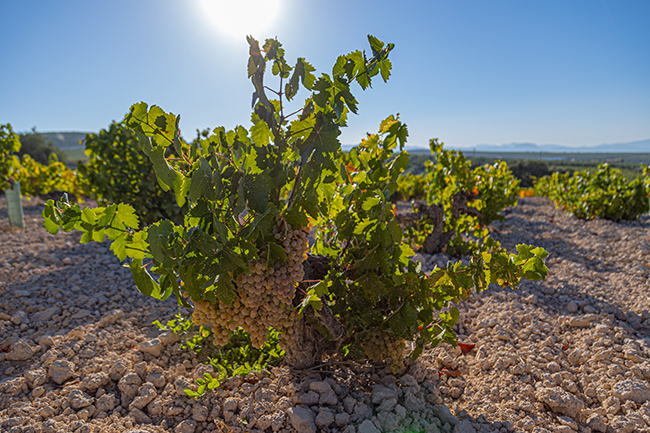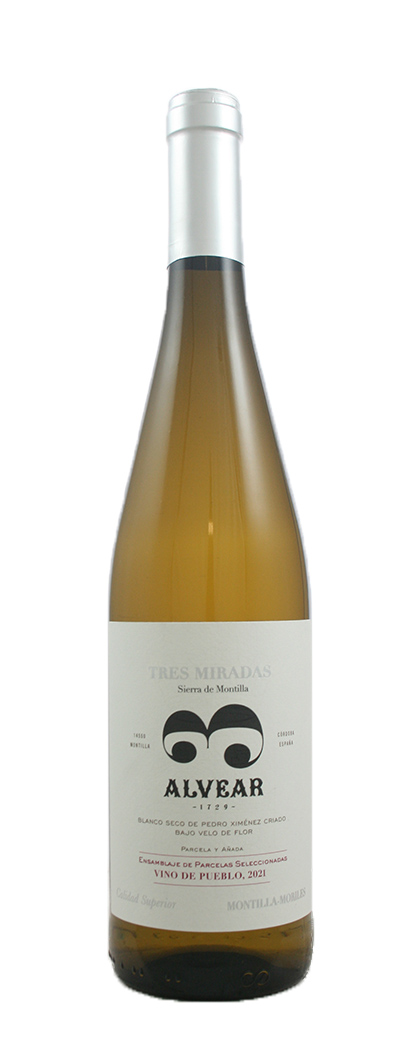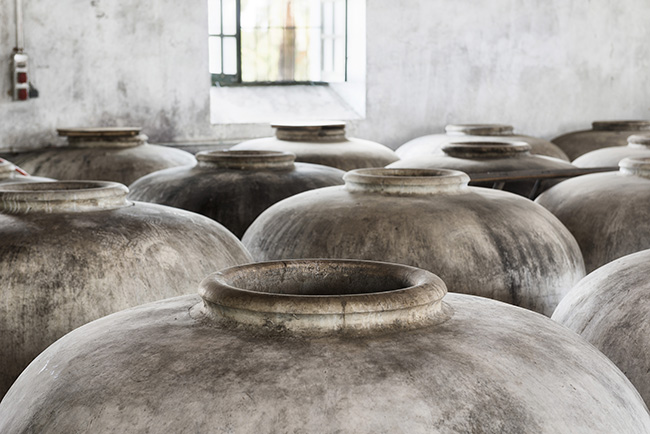PX marks the spot
Founded in 1729, Alvear is not only the oldest winery in Montilla, but in all Andalucia. The family-owned company has been around for almost three centuries, making it the second oldest winery in Spain and its brand C.B. the fifth oldest in the country. The Montilla based company has maintained its artisanal and familial character over time, staying true to its principles and philosophy as it grew. Today the stewardship of the winery’s acquired knowledge and values lies with the eighth generation of the family. The winery also looks to the future, as it has done throughout its history. Alvear consistently makes strides in its forward-looking production of Montilla wines. It explores the roots and particular attributes of Montilla’s vineyards and no more so than in the Tres Miradas range.
Tres Miradas is a series of vintage white wines made by Bodegas Alvear. In the sherry region, for example, we’ve seen a growth of terroir-driven white wines in the past few years (Cota 45, for example), but Montilla-Moriles has always had a more continuous history of unfortified wines. In fact these lower-strength wines are part of the same D.O. Montilla-Moriles, whereas the D.O. Jerez is exclusive to wines above 15% ABV.
The range of wines offers an interesting insight in the different terroirs of the Montilla region. Each wine is an expression of Pedro Ximenez from different plots. Pedro Ximénez is the noble variety of the Montilla-Moriles Denomination of Origin, as well as the Alvear vineyards and wines. Originally from the Rhine region, it is said that it was brought to Andalusia by a soldier from the Flanders tercios who gives it its name.
The vineyards are located on very calcareous soils. Two types are which are distinguished in the area: “albarizas” or “alberos”, composed of limestone and permeable soil with little organic matter content and low productivity, where the longest and most balanced ripening grapes are obtained; and the “ruedos”, reddish soils due to the presence of iron salts. Albariza soil is really the key driver in the wines, but also the marked differences in composition, altitude, and the use of tinajas in the elevage of the wines, adds to their uniqueness.
The series was first launched in 2017 as a collaboration between maverick winemakers Envínate and Alvear. In 2019, after two vintages, Ramiro Ibanez took over as the winemaking consultant for the series. Since then the project is even more focused on terroir, leaving out the skin maceration experiment of the early years.
We begin with the village wine, so to speak. In Montilla this is often simply called a Vino de Pueblo. The Pedro Ximénez here comes from a combination of plots between the Riofrío Alto and Cerro Macho estates located in the Sierra de Montilla, considered the Grand Cru of Montilla-Moriles. The vines are over 50-years-old, bush trained, and farmed sustainably, growing upon albariza. Albariza is poor in organic matter, of a simple mineral composition, and a crumbly consistency. This is a material that is capable of retaining water in an area which experiences less than 600L of rainfall per year, and for its drainage, which prevents them from accumulating water and salts.
Once the fruit is harvested, it is directly pressed without maceration and fermented in tinajas, a traditional concrete amphora of 4800 litre. The wine ages under ‘velo de flor’ for eight months before bottling, giving it a sherry-esque flavour and texture.
Ladera Benavente originates from two parcels on the northern-facing bank of the Benavente arroyo from vineyards planted in 1950. Old head-trained vines are farmed completely sustainably without organic certification, but eschewing fungicides, pesticides, herbicides, fertilizers, and irrigation.
Bunches are destemmed and pressed in a horizontal pneumatic press. The must ferments spontaneously in tinajas, traditional concrete amphora (4,800L). After fermentation in tinaja, the wine rests under the velo de flor for eight months before bottling. Ladera de Benavente expresses the most vertical and freshest single vineyard wine in the 3 Miradas line-up.
Paraje de Riofrio, a blend of old bush-vine parcels located in the highest part Paraje de Riofrío Alto in the Sierra de Montilla de Calidad Superior. After fermentation, the wine stays in tinajas for eight months before being racked to old fino casks, where the wine rests for twelve months under velo de flor. Lemon yellow with golden reflection in appearance, this is intense and complex, with aromas of baked apple, fennel, and dried chamomile. Full-bodied and silky with well-integrated acidity on the palate.
Cerro Macho and Cerro Franco are the two highest plots in the Sierra de Montilla, near the edge of Riofrío Alto, both at an altitude of around 600 metres above sea level. While Cerro Macho is oriented to the east, Cerro Franco faces south east. Soils are again limestone-based albariza. Grapes are harvested from old vines, picked early to retain more freshness.
 Fermentation in both wines took place in old botas that used to belong to the solera of the Fino CB. After the malolactic fermentation the wine stayed in the same casks, under a light layer of flor, for a further 22 months.
Fermentation in both wines took place in old botas that used to belong to the solera of the Fino CB. After the malolactic fermentation the wine stayed in the same casks, under a light layer of flor, for a further 22 months.
These are two brilliant complex wines that reward sipping, pondering and matching to food!
Cerro Franco has aromas of yellow apple, juicy pear and yeasty sourdough up front. Also stone fruits. Then dried herbs and traces of oxidation are coming out, as well as hints of fino. Almond and walnut. Some of the chamomile notes of Manzanilla too, in a slightly floral way.
Even though this is a dry wine, the roundness and implied sweetness of Pedro Ximénez is noticeable. Quinces and ripe apple. Nice acidity and lemon zest to balance this character. In the background there is a mineral hint of gravel, hay and chalk. Hints of youngish fino wine. Some leafy notes and saline elements in the end.
Cerro Macho has an earthier profile. Sandy notes greet you then crusty bread. The aromas of yellow and green apples are clearly present, almonds and wild fennel too. In the mouth, a hint of quince and pear before the nuttier side of the wine appears. Throughout there is a good whack of citrus in the background – the acidity seems a tad higher than Cerro Franco. A lightly salty touch to the finish completes the wine.
*
Interested in finding out more about the wines of Bodegas Alvear? Contact us directly:
shop@lescaves.co.uk | sales@lescaves.co.uk | 01483 538820





Pingback: Wines of 2023 – Les Caves de Pyrene